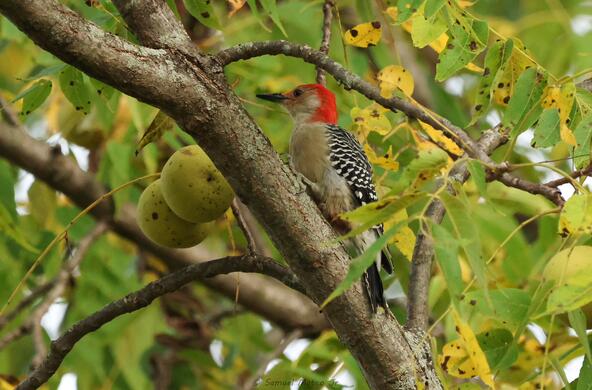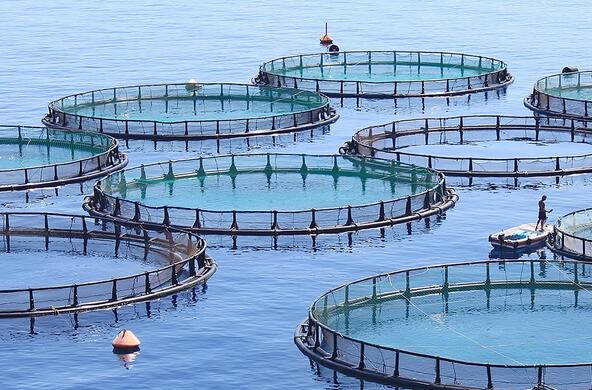When you buy organically grown vegetables, you expect that they have been produced without the use of artificial (industrial) fertilizer and pesticides. And, you expect that they are not derived from genetically modified seeds (GMOs). For organic meats, you further expect that they were grown without hormones and antibiotics. A recent scientific review suggests that the nutritional benefits of organic foods are minimal. Nevertheless, many folks will pay considerably more for such products, believing that they are good for us. I suspect you would have to look pretty deep to find someone who would suggest otherwise.
Beyond the value of the product, organic farming also results in greater contents of soil organic matter compared to conventional fields. Thus, organic farming can be expected to help mitigate the impacts of global warming, because it stores carbon in soils that would otherwise be carbon dioxide in the atmosphere.
Organic fields usually harbor higher levels of insect diversity than conventional fields that are sprayed with pesticides, which typically kill all the bugs and risk exposure to downwind and downstream ecosystems to pesticides. Some of the insects that are found in organic agriculture act as predators on species harmful to the desired crop, providing a natural benefit to the farmer. The higher biodiversity of insects on organic farms also depends on the use of surrounding lands.
The use of energy in organic farming is usually lower than in conventional fields, where the fertilizers and pesticides applied are manufactured from petroleum and natural gas and extra tractor passes over the field are required to apply them. Both agricultural systems may use pumped irrigation water, but the nitrogen in the farmyard manure in organic agriculture is released slowly during the growing season, following a single application in the spring.
Unfortunately, the yield of organic crops is nearly always lower than that of conventional crops grown under comparable conditions. Indeed, Verena Seufert and her coworkers found that the yields of organic crops were as much as 34% lower. So to produce the same amount of food, we’d need to clear about 1/3 more land for agriculture if it were organic. That’s less natural land for wildlife and more disturbed soils, which lose carbon dioxide to the atmosphere when they are cultivated by any means.
One study also reports that organic cropping does not reduce the emissions of nitrous oxide (N2O) and methane (CH4) from soils to the atmosphere. In conventional agriculture, the flux of nitrous oxide is associated with the use of inorganic nitrogen fertilizers, but it is also emitted from the organic nitrogen sources, such as manure, that are used on organic crops. The emissions of these gases are often higher per unit of yield in organic fields, because the yields are lower there.
One can enjoy the taste and health benefits of organic foods, but don’t assume that you are helping mitigate global climate change by eating them. And organic farming may actually reduce biodiversity by converting large areas of the landscape to agriculture. In any form, agriculture will continue to have impacts on the environment so long as we are trying to feed an additional 3 to 5 billion of us by mid-century.
References
Gattinger, A., A. Muller, M. Haeni, C. Skinner, A. Fliessbach, N. Buchmann, P. Maeder, M. Stotze, P. Smith and N. El-Hage, Scialabba. 2012. Enhanced top soil carbon stocks under organic farming. Proceedings of the National Academy of Sciences 109: 18226-18231.
Johnson, J.M.F., S.L. Weyers, D.W. Archer, and N.W. Barbour. 2012. Nitrous oxide, methane emissions and yield-scaled emission from organically and conventionally managed systems. Soil Science Society of America 76: 1347-1357.
Mader, P., A. Fliebach, D. Dubois, L. Gunst, P. Fried and U. Niggli. 2002. Soil fertility and biodiversity in organic farming. Science 296: 1694-1697.
Smith-Spangler, C., M.L. Brandeau, G.E. Hunter, J.C. Bavinger, M. Pearson, P.J. Eschbach, et al. 2012. Are organic foods safer or healthier than conventional alternatives? A systematic review. Annals of Internal Medicine 157:348-366.
Seufert, V., N. Ramankutty and J.A. Foley. 2012. Comparing the yields of organic and conventional agriculture. Nature 485: 229-232.
Smith, L.G., A.G. Williams, and B.D. Pearce. 2015. The energy efficiency of organic agriculture: A review. Renewable Agriculture and Food Systems 30: 280-301.
Tuck, S.L., C. Winqvist, F. Mota, J. Ahnstrom, L.A. Turnbull, and J. Bengtssch. 2014. Land-use intensity and the effects of organic farming on biodiversity: a hierarchical meta-analysis. Journal of Applied Ecology 51: 746-755.







